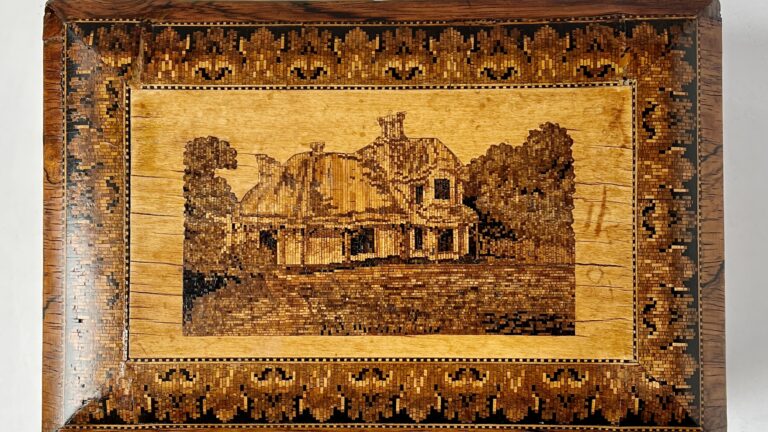
Tunbridge Ware Makers 2. Boyce, Brown and Kemp.
September 2nd, 2024

Boyce, Brown, and Kemp were notable manufacturers of Tunbridge ware, a distinctive form of decorative woodwork that originated in the town of Tunbridge Wells, Kent, England. This craft gained popularity in the 18th and 19th centuries, characterized by its intricate marquetry and inlaid designs, often featuring geometric patterns and scenes of natural beauty.
Boyce (circa 1790-1820) The Boyce family were among the early producers of Tunbridge ware, contributing significantly to its development. They specialized in creating boxes, trays, and other decorative items, employing local timbers and often incorporating motifs inspired by the surrounding
landscape
Brown (circa 1820-1850): Brown continued the tradition established by the Boyces and was known for refining the techniques of marquetry. His workshop produced a variety of products, including games and puzzles, which showcased the detailed craftsmanship that Tunbridge ware was known for.
Kemp (circa 1850-1900) Kemp’s work represented a later phase of Tunbridge ware production. He was recognized for his more elaborate designs and the incorporation of new artistic influences. His pieces often featured a wider range of colors and more complex patterns, reflecting the evolving tastes of the Victorian era.
Although the peak of Tunbridge ware production occurred in the 19th century, the legacy of Boyce, Brown, and Kemp continues to be celebrated for their contributions to this unique craft, which is still appreciated by collectors and artisans today. Their work exemplified the artistry and skill involved in creating these beautiful wooden pieces.
The connection between James Brown jr and Henry Hollamby in the context of Tunbridge Ware is significant, as both played vital roles in the development and popularization of this decorative craft during the 19th century.
Both artisans produced items that appealed to the growing middle class during the Victorian era. Their ability to create functional yet beautifully decorated pieces contributed to the popularity of Tunbridge ware as a desirable craft for collectors and as gifts for the burgeoning tourist market.
The works of James Brown jr. and Henry Hollamby continue to be celebrated today and their impact on Tunbridge ware is evident in the pieces that are collected and appreciated by enthusiasts today.


Glena Cottage shown here was visited by Queen Victoria in 1861.
It had the first running water lavatory in Ireland with a stream running under the bowl. Burned down in 1922.
This view was produced by Henry Hollamby for James Brown and others.



